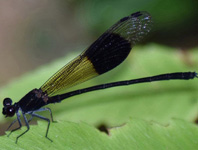Abstract
An integrated taxonomic approach, combining both morphological and molecular data, was adopted to investigate the Hydrolagus lemures-ogilbyi group in the Indo-Australian region. Single mitochondrial markers (CO1 and NADH2) provided evidence supporting the separation of four distinct species in this group. However, detailed morphological data collected from specimens from across their range failed to find any consistent differences, and many features previously considered to be diagnostic were found to be variable. Nuclear DNA data also failed to support the differences found with the single mitochondrial markers and, together with the morphological data, supported the hypothesis that only a single species in this group is present in the Indo-Australian region. In addition, the results failed to support the current generic placement of this group in Hydrolagus, suggesting they belong to the genus Chimaera with doubt over the validity of Hydrolagus as a valid genus. The oldest available name for this group is Chimaera ogilbyi and a redescription is provided. This species occurs throughout Australia, eastern Indonesia (Java, Bali, and Lombok) and northern Papua New Guinea.
References
Bigelow, H.R. & Schroeder, D.M. (1953) Fishes of the Western North Atlantic. Part Two. Sawfishes, guitarfishes, skates and rays. Chimaeroids. Memoirs of the Sears Foundation for Marine Research, U.S.A., 588 pp.
Compagno, L.J.V., Stehmann, M.F.W. & Ebert, D.A. (1990) Rhinochimaera africana sp. n., a new longnosed chimaera from southern Africa, with comments on the systematics and distribution of the genus Rhinochimaera Garman, 1901 (Chondrichthyes, Chimaeriformes, Rhinochimaeridae). South African Journal of Marine Research, 9 (1), 201–222.
https://doi.org/10.2989/025776190784378646
Cunha, R.L., Coscia, I., Madeira, C., Mariani, S., Stefanni, S. & Castilho, R. (2012) Ancient divergence in the trans-oceanic deep-sea shark Centroscymnus crepidater. PLOS ONE, 7 (11), e49196.
https://doi.org/10.1371/journal.pone.0049196
DiBattista, J.D., Rocha, L.A., Craig, M.T., Feldheim, K.A. & Bowen, B.W. (2012) Phylogeography of two closely related Indo-Pacific Butterflyfishes reveals divergent evolutionary histories and discordant results from mtDNA and microsatellites. Journal of Hereditary, 103 (5), 617–629.
https://doi.org/10.1093/jhered/ess056
Didier, D.A. (2002) Two new species of chimaeroid fishes from the southwestern Pacific Ocean (Holocephali, Chimaeridae). Ichthyological Research, 49 (4), 299–306.
https://doi.org/10.1007/s102280200045
Didier, D.A. (2008) Two new species of the genus Hydrolagus Gill (Holocephali: Chimaeridae) from Australia. CSIRO Marine and Atmospheric Research Paper, 22, 349–356.
Didier, D.A. & Séret, B. (2002) Chimaeroid fishes of New Caledonia with description of a new species of Hydrolagus (Chondrichthyes, Holocephali). Cybium, 26 (3), 225–233.
Didier, D.A., Last, P.R. & White, W.T. (2008) Three new species of the genus Chimaera Linnaeus (Chimariformes: Chimaeridae) from Australia. Descriptions of new Australian Chondrichthyans. CSIRO Marine and Atmospheric Research Paper, 22, 327–339.
Fowler, H.W. (1907) A collection of fishes from Victoria Australia. Proceedings of the Academy of Natural Sciences of Philadelphia, 59 (3), 419–444. Available from: http://www.jstor.org/stable/4063196?seq=1#page_scan_tab_contents (accessed 11 December 2017)
Garman, S. (1911) The Chismopnea (chimaeroids). Memoirs of the Museum of Comparative Zoology, 40 (3), 81–101.
Gill, T.N. (1862) Note on some genera of fishes of western North America. Proceedings of the Academy of Natural Sciences of Philadelphia, 14, 329–332. Available from: https://www.jstor.org/stable/4059478?seq=1#page_scan_tab_contents (accessed 11 December 2017)
Hebert, P.D.N., Cywinska, A., Ball, S.L. & de Waard, J.R. (2003) Biological identifications through DNA barcodes. Proceedings of the Royal Society B, 270 (1512), 313–322.
https://doi.org/10.1098/rspb.2002.2218
Holmes, B.H., Steinke, D. & Ward, R.D. (2009) Identification of shark and ray fins using DNA barcoding. Fisheries Research, 95 (2–3), 280–288.
https://doi.org/10.1016/j.fishres.2008.09.036
Kemper, J.M., Ebert, D.A., Naylor, G.J.P. & Didier, D.A. (2014) Chimaera carophila (Chondrichthyes: Chimaeriformes: Chimaeridae), a new species of chimaera from New Zealand. Bulletin of Marine Science, 91 (1), 63–81.
https://doi.org/10.5343/bms.2014.1042
Last, P.R. & Stevens, J.D. (2009) Sharks and rays of Australia. Second edition. CSIRO Publishing, Melbourne, 656 pp.
Last, P.R., White, W.T. & Pogonoski, J.J. (2008) Chimaera argiloba sp. nov., a new species of chimaerid (Chimaeriformes: Chimaeridae) from northwestern Australia. In: Last, P.R., White, W.T. & Pogonoski, J.J. (Eds.), Descriptions of new Australian Chondrichthyans. CSIRO Marine and Atmospheric Research, Australia, pp. 341–348.
Linnaeus, C. (1758) Systema naturae per regna tria naturae, secundum classes, ordines, genera, species, cum characteribus, differentiis, synonymis, locis. Tomus I. Editio decima, reformata, 1. Impensis Direct. Laurentii Salvii, Holmiae, 824 pp.
Naylor, G.J.P., Ryburn, J.A., Ferigo, O. & Lopez, A. (2005) Phylogenetic relationships among the major lineages of modern elasmobranchs. In: Hamlett, W.C. (Ed.), Reproductive Biology and Phylogeny of Chondrichthyes: Sharks, Batoids and Chimaeras. Science Publishers, Enfield, pp. 1–25.
Rabone, M., Lavery, S.D., Little, A. & Clements, K.D. (2015) Discordance between nuclear and mitochondrial DNA analyses of population structure in closely related triplefin fishes (Forsterygion lapillum and F. capito, F. Tripterygiidae) supports speciation with gene flow. Marine Biology, 162 (8), 1611–1624.
https://doi.org/10.1007/s00227-015-2697-6
Saitou, N. & Nei, M. (1987) The neighbor-joining method: A new method for reconstructing phylogenetic trees. Molecular Biology and Evolution, 4 (4), 406–425.
Sala-Bozano, M., Ketmaier, V. & Mariani, S. (2009) Contrasting signals from multiple markers illuminate population connectivity in a marine fish. Molecular Ecology, 18 (23), 4811–4826.
https://doi.org/10.1111/j.1365-294X.2009.04404.x
Samadi, S., Puillandre, N., Pante, E., Boisselier, M.C., Chen, W.J., Corbari, L., Maestrati, P., Mana, R., Thubaut, J., Zuccon, D. & Hourdez, S. (2014) Patchiness of deep-sea communities in Papua New Guinea and potential susceptibility to anthropogenic disturbances illustrated by seep organisms. Marine Ecology, 36 (S1), 109–132. Available from: http://onlinelibrary.wiley.com/doi/10.1111/maec.12204/abstract (accessed 11 December 2017)
Waite, E.R. (1898) New South Wales fisheries. Trawling operations off the coast of New South Wales, between the Manning River and Jervis Bay, carried on by H. M. C. S. "Thetis". Scientific report on the fishes. Official report, Sydney, 62 pp.
Ward, R.D., Zemlak, T.S., Innes, B.H., Last, P.R. & Hebert, P.D.N. (2005) Barcoding Australia’s fish species. Philosophical Transactions of the Royal Society B, 360 (1462), 1847–1857.
https://doi.org/10.1098/rstb.2005.1716
Weigmann, S. (2016) Annotated checklist of the living sharks, batoids and chimaeras (Chondrichthyes) of the world, with a focus on biogeographical diversity. Journal of Fish Biology, 88 (3), 837–1281.
https://doi.org/10.1111/jfb.12874
White, W.T., Last, P.R., Stevens, J.D., Yearsley, G.K., Fahmi & Dharmadi (2006). Economically Important Sharks and Rays of Indonesia. ACIAR Publishing, Canberra, 329 pp.
Whitley, G.P. (1939) Taxonomic notes on sharks and rays. Australian Zoologist, 9 (3), 227–262.

